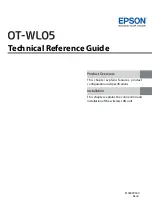
091415
Anchor
Location:
Select
a
suitable
anchor
point.
Ensure
the
anchor
structure
will
meet
static
strength
requirements.
See
paragraph
3.5.1.
Minimum
Required
Fall
Clearance
(MRFC):
Ensure
the
anchor
point
will
provide
for
the
Minimum
Required
Fall
Clearance
(MRFC).
The
MRFC
is
the
minimum
distance
a
user
needs
between
himself
and
the
nearest
obstruction
(or
ground)
below
the
walking/working
surface
to
avoid
serious
injury
or
death
in
case
of
a
fall
event.
MRFC
using
an
SRD
is
the
sum
of
four
parts;
Activation/Deceleration
Distance
Harness
Stretch
and
Dorsal
D
‐
Ring
Shift
Height
of
the
Dorsal
D
‐
Ring
Safety
Factor
Activation/Deceleration
Distance
is
dependent
on
the
class
of
SRD,
Class
A
or
Class
B.
Harness
Stretch,
Safety
Factor,
and
Height
of
the
Dorsal
D
‐
ring
are
constants.
Be
aware
that
if
the
user
is
kneeling
or
crouching
while
performing
work,
add
up
to
an
additional
3
feet
to
the
total
MRFC.
See
Figure
3A
and
3B.
Swing
Fall:
A
swing
fall
occurs
when
the
worker
moves
laterally
and
is
no
longer
directly
under
the
anchorage,
as
shown
in
Figure
4.
This
lateral
movement
expands
the
work
zone.
If
the
user
strikes
an
obstruction,
the
lower
level,
or
the
ground
during
a
swing
fall,
serious
injury
or
death
can
occur.
Swing
falls
when
using
an
SRD
also
greatly
increase
the
MRFC.
Use
caution
and
take
action
to
minimize
swing
fall
hazards.
Expanded
Work
Zone:
The
work
zone
is
a
circle
with
its
center
on
the
walking/working
surface
directly
under
the
anchorage.
As
the
user
moves
laterally,
the
radius
of
the
circle,
measured
in
feet,
increases,
expanding
the
work
zone.
As
the
work
zone
circle
expands,
swing
fall
forces
become
greater,
increasing
the
risk
of
serious
injury
from
striking
an
obstruction
or
a
lower
level
during
a
swing
fall
increase.
Increased
force
and
the
associated
increased
risk
results
in
increased
MRFC.
The
length
of
the
SRD
lifeline
is
also
a
factor.
The
longer
the
lifeline,
the
larger
the
potential
work
zone
becomes.
A
larger
work
zone
increases
user
risk
and
also
increases
the
MRFC.
Chart
1
provides
a
chart
grid
to
aid
in
calculating
the
MRFC
with
an
expanded
work
zone.
The
manufacturer
recommends
a
maximum
limit
of
4'
of
additional
clearance
due
to
swing
fall.
WARNING
An
expanded
work
zone
combined
with
an
extended
SRD
lifeline
can
be
extremely
hazardous.
4.2
Operation
of
the
SRD:
Inspect
the
SRD
before
each
use
in
accordance
with
the
procedures
defined
in
Section
7
of
this
manual.
Do
not
use
the
SRD
if
inspection
shows
damage
or
any
malfunction.
Don
the
FBH
in
accordance
with
the
FBH
manufacturer's
instructions.
Follow
the
instructions
contained
in
this
manual
and
on
the
labels.
Failure
to
follow
instructions
may
result
in
serious
injury
or
death.
Connect
the
leg
end
carabiner
to
the
dorsal
D
‐
ring
on
the
FBH.
Ensure
the
carabiner
closes
and
locks.
Attach
the
housing
carabiner
to
the
chosen
anchorage
and
ensure
the
carabiner
closes
and
locks.
Ensure
all
connections
are
compatible.
Normal
operation
will
allow
the
working
length
of
the
lifeline
to
extend
and
retract
as
the
worker
moves
about.
A
certain
amount
of
tension
must
remain
on
the
cable
at
all
times
to
ensure
proper
operation
of
the
internal
brake.
Do
not
allow
the
lifeline
to
become
slack.
If
the
lifeline
becomes
slack,
remove
the
SRD
from
service
for
inspection.
See
Section
7.
Avoid
sudden
or
quick
movements
during
the
normal
work
operation,
as
this
may
cause
the
SRD
brake
to
engage.
LOCKING
MECHANISM:
The
SRD
utilizes
an
acceleration
‐
based
locking
mechanism.
The
locking
function
requires
a
certain
payout
rate
during
a
fall
event
to
function
correctly.
Certain
situations,
confined
or
cramped
spaces,
shifting
footing
such
as
sand,
gravel,
grain,
or
a
sloped
surface
may
not
allow
the
lifeline
to
reach
sufficient
speed
to
activate
the
lock
mechanism.
A
clear
path
is
required
to
assure
positive
locking
of
the
SRD.
Ensure
the
lock
is
functioning
properly.
Pull
the
lifeline
out
a
short
distance
and
give
it
a
sharp
tug.
The
lifeline
must
lock.
If
it
fails
to
lock,
remove
it
from
service
immediately.
Ensure
the
work
zone
remains
within
stated
parameters.
Beware
of
Leading
Edge
hazards.
DO
NOT
attach
an
additional
shock
absorbing
lanyard
or
similar
device
between
the
SRD
housing
and
the
anchorage.
4.3
Fall
Arrest
Impact
Indicator:
The
SRD
incorporates
a
fall
arrest
impact
indicator
in
the
form
of
a
red
band
in
the
leg
end
carabiner,
as
shown
in
Figure
5.
If
the
red
band
is
visible,
remove
the
SRD
from
service
immediately.
DO
NOT
work
above
the
anchor.
DO
NOT
expose
the
red
reserve
indicator.
DO
NOT
allow
one
SRD
lifeline
to
become
tangled
or
twisted
with,
or
cross
over
another
SRD
lifeline
during
use.
DO
NOT
allow
any
lifeline
to
pass
under
arms
or
between
legs
during
use.
DO
NOT
clamp,
knot,
or
prevent
the
lifeline
from
retracting
or
being
taut.
DO
NOT
lengthen
the
SRD
by
connecting
a
lifeline
or
similar
component.
DO
NOT
allow
the
lifeline
to
remain
outside
the
housing
when
not
in
use.
DO
NOT
allow
the
lifeline
to
freewheel
back
into
the
housing.
Use
a
tag
line
to
maintain
tension
and
rewind
the
lifeline
during
periods
of
inactivity.
Use
the
tag
line
to
retrieve
the
leg
end
carabiner
for
the
next
use.
DO
NOT
leave
the
tag
line
connected
to
the
leg
end
connector
when
using
the
SRD
for
fall
protection.
4.4
After
a
Fall:
Remove
from
service
any
equipment
that
has
been
subjected
to
fall
arrest
forces
or
that
exhibits
damage
consistent
with
such
forces.
5.
SPECIFICATIONS
See
Table
1.
6.
MAINTENANCE,
SERVICE,
AND
STORAGE
6.1
Maintenance:
Ensure
the
SRD
is
kept
free
of
excess
paint,
grease,
dirt
or
other
contaminants
as
this
may
cause
to
cable
or
retracting
mechanism
to
malfunction.
Ensure
no
debris
enters
the
housing
through
the
cable
access
port.
Clean
the
exterior
of
the
unit
as
required
with
a
detergent/water
solution.
Do
not
allow
excess
water
inside
the
housing,
unless
it
is
being
flushed,
such
as
after
exposure
to
salt
water
or
other
corrosion
causing
elements.
After
cleaning,
pull
the
lifeline
all
the
way
out,
allow
the
unit
to
air
dry,
then
retract
the
lifeline
into
the
unit.
Clean
labels
as
required.
DO
NOT
use
heat
to
dry.
DO
NOT
attempt
to
disassemble
the
SRD.
6.2
Service:
If
service
is
required
for
any
reason;
inspection
failure,
impact
loaded,
any
type
of
malfunction,
tag
the
unit
as
“UNUSABLE”,
and
contact
FallTech
at
323
‐
752
‐
0066
to
receive
a
Return
Authorization
number.
Only
the
manufacturer
or
an
authorized
agent
may
make
repairs
or
service
the
SRD.
6.3
Storage:
Hang
the
SRD
in
a
cool,
dry,
clean
environment,
out
of
direct
sunlight.
Position
the
SRD
so
excess
water
can
drain
out.
Avoid
exposure
to
chemical
or
caustic
vapors.
Thoroughly
inspect
the
SRD
after
any
period
of
extended
storage.
4
Summary of Contents for SRD
Page 11: ...103014 11...





































